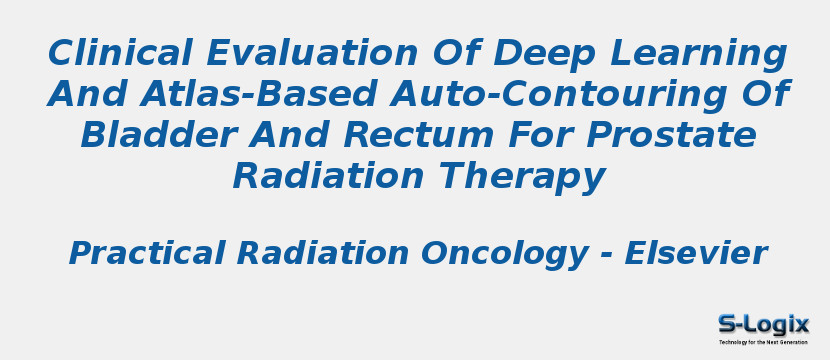Research Area: Machine Learning
Auto-contouring may reduce workload, interobserver variation, and time associated with manual contouring of organs at risk. Manual contouring remains the standard due in part to uncertainty around the time and workload savings after accounting for the review and editing of auto-contours. This preliminary study compares a standard manual contouring workflow with 2 auto-contouring workflows (atlas and deep learning) for contouring the bladder and rectum in patients with prostate cancer.Three contouring workflows were defined based on the initial contour-generation method including manual (MAN), atlas-based auto-contour (ATLAS), and deep-learning auto-contour (DEEP). For each workflow, initial contour generation was retrospectively performed on 15 patients with prostate cancer. Then, radiation oncologists (ROs) edited each contour while blinded to the manner in which the initial contour was generated. Workflows were compared by time (both in initial contour generation and in RO editing), contour similarity, and dosimetric evaluation.Mean durations for initial contour generation were 10.9 min, 1.4 min, and 1.2 min for MAN, DEEP, and ATLAS, respectively. Initial DEEP contours were more geometrically similar to initial MAN contours. Mean durations of the RO editing steps for MAN, DEEP, and ATLAS contours were 4.1 min, 4.7 min, and 10.2 min, respectively. The geometric extent of RO edits was consistently larger for ATLAS contours compared with MAN and DEEP. No differences in clinically relevant dose-volume metrics were observed between workflows.Auto-contouring software affords time savings for initial contour generation; however, it is important to also quantify workload changes at the RO editing step. Using deep-learning auto-contouring for bladder and rectum contour generation reduced contouring time without negatively affecting RO editing times, contour geometry, or clinically relevant dose–volume metrics. This work contributes to growing evidence that deep-learning methods are a clinically viable solution for organ-at-risk contouring in radiation therapy.
Keywords:
Author(s) Name: W. Jeffrey Zabel, Jessica L. Conway, Adam Gladwish, Julia Skliarenko, Giulio Didiodato , Leah Goorts-Matthews, Adam Michalak MRT, Sarah Reistetter MRT, Sarah Reistetter MRT, Jenna King , Keith Nakonechny, Kyle Malkoske, Muoi N. Tran , Nevin McVicar
Journal name: Practical Radiation Oncology
Conferrence name:
Publisher name: Elsevier
DOI: 10.1016/j.prro.2020.05.013
Volume Information: Volume 11, Issue 1, January–February 2021, Pages e80-e89
